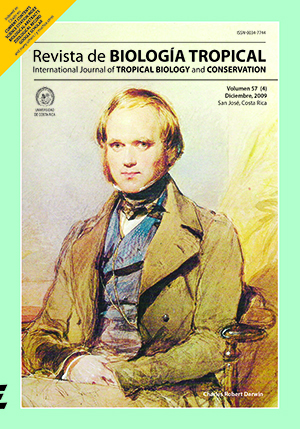Abstract
Huperzia brevifolia is one of the dominant species of the genus Huperzia living in paramos and superparamos from the Colombian Andes. A detailed study of the sporangium’s ontogeny and sporogenesis was carried out using specimens collected at 4200m above sea level, in Parque Natural Nacional El Cocuy, Colombia. Small pieces of caulinar axis bearing sporangia were fixed, dehydrated, paraffin embedded, sectioned in a rotatory microtome, and stained using the common Safranin O-Fast Green technique; handmade cross sections were also made, stained with aqueous Toluidine Blue (TBO). The sporangia develops basipetally, a condition that allows observation of all the developmental stages taking place through-out the caulinar axis of adult plants. Each sporangium originates from a group of epidermal cells, axilar to the microphylls. These cells undergo active mitosis, and produce new external and internal cellular groups. The sporangium wall and the tapetum originate from the external group of cells, while the internal cellular group leads to the sporogenous tissue. Meiosis occur in the sporocytes and produce simultaneous types tetrads, each one giving rise four trilete spores, with foveolate ornamentation. During the sporangium ripening, the outermost layer of the wall develops anticlinally, and inner periclinal thickenings and the innermost one perform as a secre-tory tapetum, which persists until the spores are completely mature. All other cellular layers colapse.
##plugins.facebook.comentarios##

This work is licensed under a Creative Commons Attribution 4.0 International License.
Copyright (c) 2009 Revista de Biología Tropical






